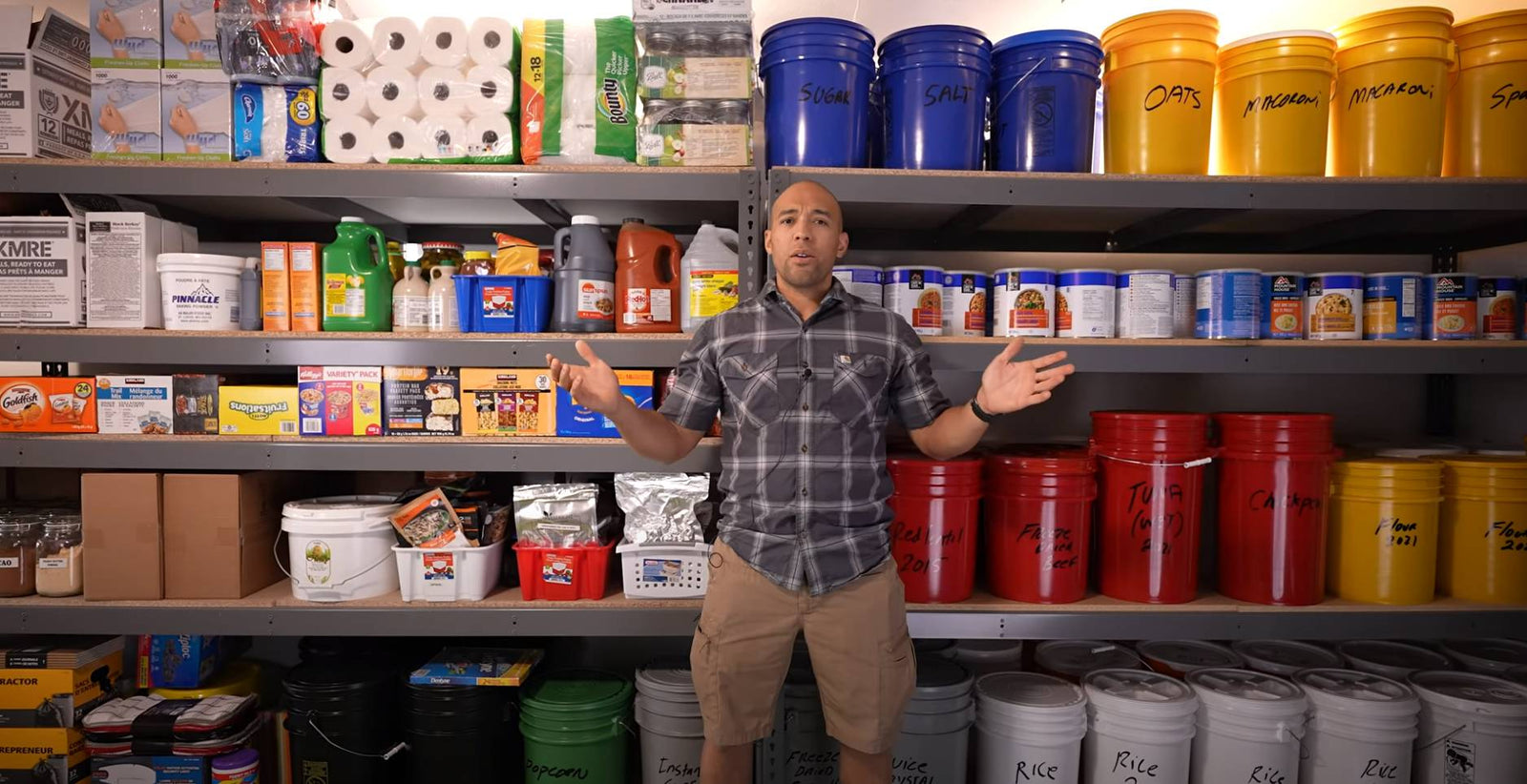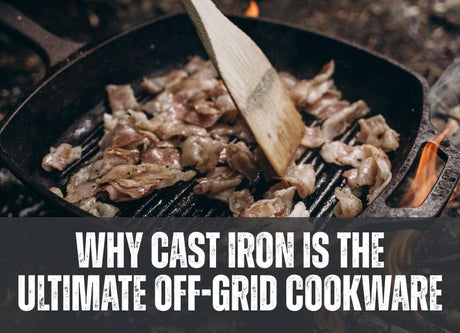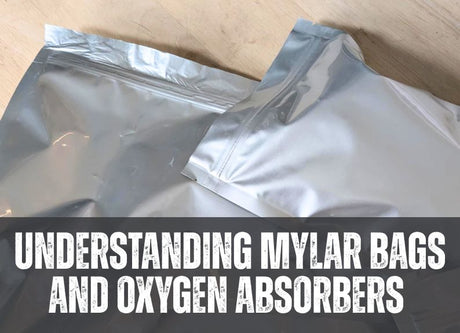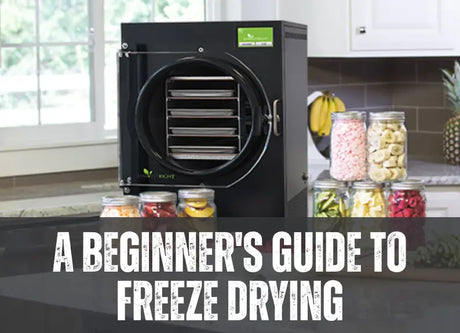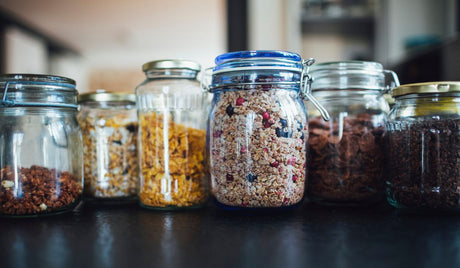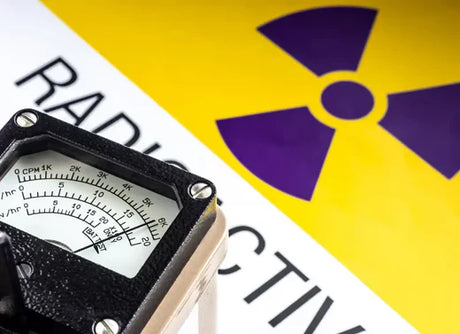Dehydrating food is the process of removing moisture, whether through sublimation––where moisture turns to gas without a liquid stage, or through evaporation––the slower and more traditional method of desiccating foods. No matter which way you choose, dehydrated food is a safe and easy way to preserve large volumes of food in smaller spaces without refrigeration––all while retaining taste and nutritional value.
Why should you dehydrate food at home?
Drying foods is one of the most ancient ways of preserving food. In every case, ensure that your produce is fresh, washed, pitted, and ripe to maintain the best flavour for many years to come. No matter which method you choose, dehydrating your own food is a process, so it pays to do a lot at once.
Dehydrating food allows you to preserve food for longer while maintaining the flavour. By reducing the moisture content below 20%, you are preventing decay. Mould needs moisture to survive, which is why you can store everything from meat to berries without refrigeration by dehydrating them. Dehydration is an ancient process that maximizes your harvest, allowing you to feed yourself and your family in any situation.
What is the benefit of dehydrating food?
Not only does dehydrated food last for a long time when well stored, but it is also superior to other methods of food preservation like canning. Canning foods can compromise the quality of the food over time both through the use of heat to seal the jars and through oxidation––so you must store canned foods in a dark, cool environment.
Dehydrated foods are packed with nutrients, and by volume, are an even higher source of nutrients than fresh produce; for example, dried fruits have over three times the fibre of their fresh counterparts by weight. Since you can dehydrate and store anything from milk to mushrooms, this is easily the most efficient way to stockpile food for any emergency.

What is the difference between freeze-drying and dehydrating?
Freeze-drying relies on the process of sublimation. Sublimation is the process of evaporation without a liquid stage. In nature, this occurs where the combination of air, light, and temperature create perfect conditions for evaporation––this is how snow covered mountains produce moisture despite remaining frozen. It can be difficult to fully freeze-dry foods without investing in a vacuum sealed unit, or having access to dry ice and the materials for proper handling, but it is worth the investment. Freeze-drying foods allows you to retain the shape and colour of foods, as well as remove the most moisture for easy powdering. It’s also incredibly versatile, and can allow you to preserve anything from a plate of ravioli to a carton of eggs.
Dehydrating relies on several factors to remove the water from foods, sun, time, and airflow. Whether in nature or via a dehydrator, the key elements remain the same. As a result, you are able to retain the nutrients and fibre or your fruits, vegetables, and even meat without the spoilage that claims fresh produce all too quickly. Dehydrating can shrink and slightly discolour food, think banana chips or raisins, but the process ensures long-lasting and delicious treats.
Why you should powder your freeze-dried food.
Powdered food is food that has been dehydrated and then processed into a powder. There are different dehydration methods, but freeze-drying is required for powdered foods, as it removes the most moisture content. Storing your food in this way allows you to store the most nutrients and calories into the smallest possible volume so that you can store more with less room required. There are several reasons to powder foods, as:
- It makes the food more uniform so you can reconstitute it consistently
- It reduces the amount of space needed to store
- It eliminates potential punctures in storage bags leading to spoilage
- It makes it significantly easier to transport

Many foods are easier to store and use as a powder, such as eggs, meat, milk, and more. Freeze-dried foods are quickly turned into powder with a food processor, especially if you invest in a vacuum freeze dryer––which is the most efficient way to freeze-dry foods.
10 essential tools for dehydrating food at home.
There are several tools and materials that are needed to dehydrate foods at home. Have all your materials on hand, the food prepared, and storage bags ready.
- Mandolin
- Cookie sheets or drying racks
- Parchment paper
- Freezer bags and/or plastic wrap
- A selection of fresh foods (higher water content produces better results)
- Sharp knife and cutting board
- Blender or food processor
- Mylar bags and silica gel packs for best storage
- Vacuum Freeze Dryer
-
A pre-treatment for fruits and vegetables to prevent oxidation
The 4 most common methods to dehydrate food are:
There are many ways to dehydrate food, and while we prefer freeze-drying to remove moisture effectively, you can make use of any technology you have available. Here are some of the most common ways to dehydrate food.

-
Solar drying
This is a very traditional but effective way of removing moisture for foods to preserve them. To sun-dry your garden harvest is a rewarding method of preserving food long into the winter. To use the sun the same way as our ancestors, you will need to construct a unit to protect your food from pests and weather while still allowing the food to access the sunshine directly. To sun-dry your food:
- Cut food into thin slices
- Spread food over your drying trays with plenty of room for air
- Put trays into direct sunlight (make sure to check the weather)
- Rotate the trays in the sun until dried
- Bring in trays at night and in bad weather to prevent rot or moisture damage
To speed up the process, you can purchase an indirect solar dryer, which is more effective and takes less time than the old-fashioned way. In addition, it is less susceptible to the elements as it is better covered.
- Follow the same process as above
- Add trays to your dryer
-
Rotate each day until the food is dehydrated
-
Oven Drying
Using your oven or microwave oven is a great way to dehydrate your food. Not only do you already have these materials ready to use, but the process is significantly faster than solar drying, taking about 6-8 hours. There are drawbacks to this method; ovens aren’t especially good at removing moisture, it is cooking the foods instead of properly dehydrating them, and the energy use of an oven vs other methods is significant.
- Wash and thinly slice all produce
- Set your oven to the lowest possible temperature
- Lay thinly sliced pieces on parchment, ensure they are well spaced
- Use a drying rack on your cookie sheet for increased airflow
- Experiment with your oven before committing to large volumes
-
Check every hour and flip produce
-
Dehydrator
Using a dehydrator is exceptionally convenient. Turning fresh fruit into delicious snacks is easy and can really prolong the life of your produce. Food dehydrators create an even environment that is superior for creating everything from beef jerky to banana chips. Like the other methods, food storage plays an important role in the shelf life of your foods, so ensure you’re prepared. Researching the best dehydrator for your needs and budget is recommended, there are great machines at every budget if you know what you are looking for. Some important considerations include: horizontal vs. vertical fan style, wattage, temperature control, and material.
- Choose fresh produce and prepare it by washing or marinating, depending on the kind of food you are dehydrating
- Cut produce into thin pieces
- Place on the trays provided, leaving a good amount of room for airflow
-
Dehydrating can take time, depending on your desired outcome, so plan to have it out for the day in a well ventilated area
-
Freeze drying
Sublimation-drying, freeze-drying or lyophilization is the most effective way to remove moisture from foods, which is especially important if turning them into powder. Since powdered foods are the most efficient way to prepare and store a lot of food, learning to do it effectively at home is a skill worth investing in. Freeze-dried food retains all of its visual properties through a sublimation process, as opposed to other dehydration methods. You can freeze dry anything from a plate of spaghetti to a bowl of eggs––almost any food can be successfully freeze-dried. While a vacuum freezer is worth investing in and will allow you to freeze-dry more diverse types of food, you can utilize your home freezer or deep-freeze as well.
How to freeze-dry food in a standard home freezer:
- Prepare your food: choose quality, ripe, and fresh foods
- For fruit and vegetables, wash thoroughly and cut into smaller, uniform pieces
- Using a tray, layout food uniformly to allow easy drying and good airflow
- If you have a deep freeze, use it over a refrigerator freezer
-
Allow the food to fully dry before removing it––to test, you can take one piece from your tray and allow it to thaw. This will take sometime, upwards of several weeks. Be mindful that you shouldn’t open the freezer during this time, so a deepfreeze is the best way to go if you opt to use your home freezer.
To use a vacuum seal freezer:
- Prepare your food as above
- Put food evenly on the trays or in the bags provided to allow for proper airflow
- Place the frozen food in the vacuum chamber pulled to about 120 m Torr. Set the temperature to 10 °C (50 °F) ––this may vary depending on your unit
- After one week, test your food to ensure it is properly freeze-dried.
How to properly store dehydrated foods.

Food storage is a critical part of preparedness planning. Long-term food stocking requires careful storage free from moisture, pests, heat, and oxygen. To store your powdered or dehydrated foods, follow these steps.
-
Store in a vacuum-sealed mylar bag with a silica gel pack to remove moisture and an oxygen absorber to prevent oxidation.
-
Label and date each mylar bag so that you can properly rotate your supply to ensure there is no waste.
- Store mylar bags in sealed buckets. Plastic will work best as it’s the most resistant to damage from both pests and flooding. They also allow for easy stacking, which is particularly handy in small spaces.
Dehydrating your own food is an essential prepper skill.
Long-term food storage is a critical part of your emergency plan. Learning to dehydrate and store your own food can save you money while preserving your hard-grown produce. When well-stored, dehydrated foods have a significant shelf life. In addition, it is one of the best ways to preserve the original nutrients of the food, whereas canning and other forms of preservation can destroy some nutrients, such as vitamin C, through heating.
Want to learn more about long-term food shortage?
Check out our youtube channel, where we discuss our food pantry strategy and food items to stockpile now.
-
5 Year Survival Food Supply: $7,000 and 2.5 MILLION Calories
-
LOAD UP WHILE YOU CAN! Stockpiling Supplies for Grid Down Emergency
-
100 Days Worth of Food for $100: LASTS 25 YEARS!

